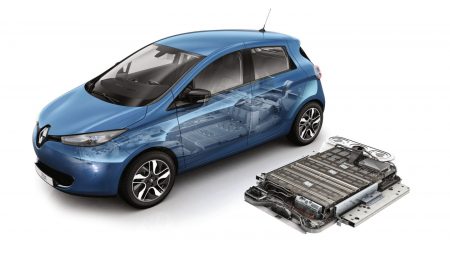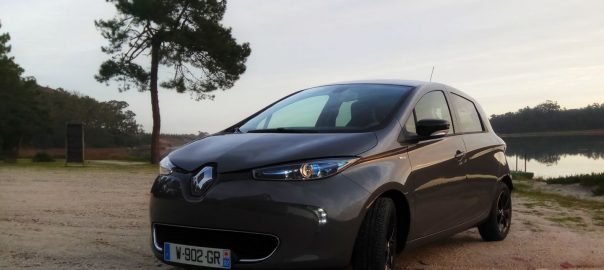It’s just like the original Zoe, but this version of Renault’s electric car goes on and on.
Portugal, Renault, and electric cars are becoming indivisibly linked in my mind. I test drove the Renault Fluence in Lisbon in November 2011, and then the Renault Zoe a few miles up the coast in March 2013. I liked both cars, but with effective touring ranges of around 80 miles, I’d be the first to admit they had their limitations.
The latest version of the Zoe, the Z.E. 40, is an attempt to address that limitation. While the 2013 model had a 22kWh battery, the 2017 incarnation packs nearly twice as much energy: 41kWh, to be precise, with a real-world range of about 190 miles.

Same-sized battery, twice the range
The increase in battery capacity is a pretty impressive achievement when you consider that the lithium-ion pack occupies the same space as the old unit and weighs only 15 kilos more.
Developed by LG Chem, the new battery has improved chemistry and a redesigned internal structure that has increased the active surface area within the cells by 10 percent. The individual cells are now also thicker and the empty space between them has been reduced. If that all sounds a bit vague, it’s because neither Renault or LG Chem are about to spill the really interesting technical beans.

The end result of fitting a higher-capacity battery is that the Zoe 40 has an NEDC-certified range of 250 miles or, as Renault freely admits, a real-world summer range of 186 miles. It reckons that figure drops to 124 miles in full-on winter running.
Fair weather notwithstanding I didn’t quite manage to hit that magic 186-mile range. On two long-distance runs that included a mix of high-speed motorway driving and energetic hustling along Portugal’s back roads, I managed to get 175 and 163 miles from two full charges.
The second run included a rapid approach into Lisbon along the A8 from Caldas da Rainha with my foot down and the Zoe bowling along at close to its maximum speed. The weather was mild during the test so the climate-control system was seldom needed, but a fair amount of night-time driving was involved. The Zoe’s headlights may be efficient but they are also dismal.
Considering that on both days of the test I found myself running behind schedule and was therefore driving in a manner that I’d politely describe as energetic, I was happy with those range numbers. Improving on them really wouldn’t have been difficult.
But as with all electric cars it’s the psychology of range that is as important as the actuality. Because each morning the Zoe 40 told me I had a minimum of around 180 miles of range rather than 90 I didn’t experience the kind of range anxiety induced by the original model.
Even when forced to double back in the middle of nowhere because of a flooded road, take a 15 mile detour, and drive down a rutted track in the pitch dark (satnavs and Portugal are not a stellar combination), my range-sphincter didn’t pucker.
Read more: Ars Technica

One thought on “2017 Renault Zoe review: A cure for range anxiety”